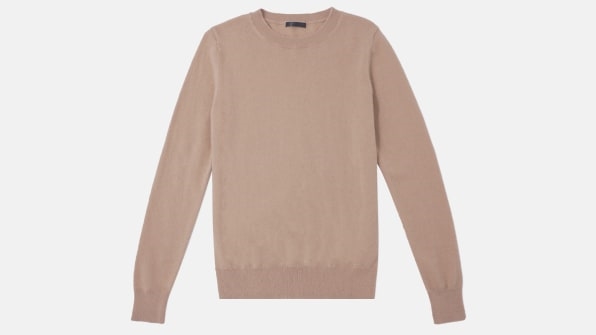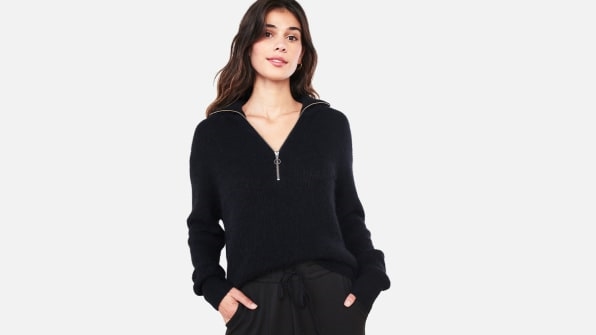You can get a cashmere sweater for only $50 from this radically transparent basics company
As the fall arrives and temperatures drop, you may be looking to restock your sweater drawer. If this was the year you wanted to spring for cashmere, I have good news for you. We’ve found a brand that sells Grade A Mongolian cashmere sweaters at the unbelievably affordable price of $50 for women and $59 for men. They come in nine colors that are perfect for the season, including an autumnal orange and a mossy green.
It’s from a new startup called Quince that makes a wide range of products, including clothing, accessories, jewelry, and home goods. The brand seeks to use the highest quality materials for each product and sell them at the lowest possible price. Silk blouses are $59.90, 14 karat gold rings are $89, Italian suede trucker jackets are $249, and a set of Turkish towels go for $39.90. Shipping is always free, and there isn’t even a membership fee to join.
So how on earth does the brand get prices so low, while using such expensive materials? It all comes down to the company’s business model, which can be described as “manufacturer to consumer.” “Each item ships from the factory floor to the customer’s doorstep,” says Sid Gupta, Quince’s founder and CEO. “This eliminates a tremendous amount of cost, which we pass back to the customer.”

Traditional fashion brands place orders at factories at the start of a season, but it’s hard to predict how much inventory to buy, since it is unclear exactly what customer demand will be like. They might place an order for 100,000 cashmere sweaters in the spring, which will arrive in their warehouse in the United States in August. But the brand expects to sell only a portion of them at full price. To ensure they don’t make a loss, they fold in the cost of the unsold or discounted inventory into the price of each sweater. “Demand forecasting is very tough,” says Gupta, who previously founded a candy company. “The fashion industry is notorious for overproducing products.”
To solve this problem, Gupta has created a more nimble supply chain. Quince places orders at factories at the beginning of the month. If some colors or sizes aren’t selling well, he adjusts the order. This means that there is very little unsold product, so Quince doesn’t need to inflate the cost of each item. This system requires a quick turnaround, which is why Quince ships direct from the factory to the customer. Gupta says that products arrive between three and five days after the customer places the order. “It’s an incredibly responsible supply chain, but it doesn’t take as long as it would if each item were made to order,” Gupta says.

Over the past few years, many brands have embraced the “direct to consumer” business model, in which they don’t sell through department stores or retailers, thereby cutting out the middleman markup. But Gupta says that these brands still buy inventory in advance, which means they have to incorporate the cost of unsold inventory into their pricing. With Quince, he aims to cut this inflated price out, allowing prices to be even lower than DTC brands selling similar products.
As the holidays come around, Quince’s cashmere products are likely to be a big hit. Besides the sweaters, the brand has a range of other cashmere items that will make good gifts, such as $89.90 sweatpants, $29.90 pom-pom beanies, and a $19.90 sleep mask.
(20)



